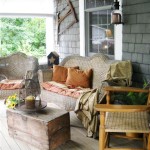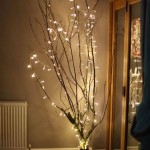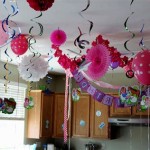Home Decor Styles Explained
Home decor styles, like a kaleidoscope, offer a vibrant array of choices to express your personal aesthetic and transform your living spaces into havens that reflect your unique personality. From the minimalist elegance of Scandinavian design to the opulent grandeur of Victorian, understanding these various styles can empower you to create a space that truly resonates with you. This article delves into the key aspects of popular home decor styles, providing insights into their defining characteristics and inspiration for your own design journey.
Scandinavian Design
Scandinavian design, often called "Scandi", is synonymous with simplicity, functionality, and a love for natural materials. Its roots lie in the Nordic countries of Denmark, Sweden, Norway, Finland, and Iceland, where the long, dark winters inspire a focus on creating cozy and inviting interiors.
Here are the defining elements of Scandinavian design:
- Minimalism: Characterized by clean lines, uncluttered surfaces, and a focus on essential furniture pieces.
- Light and Airiness: Scandinavian homes embrace natural light, often featuring large windows and light-toned walls to create a sense of spaciousness.
- Natural Materials: Wood, especially light-colored woods like birch and pine, is a staple. Other natural materials like wool, leather, and linen are also frequently used.
- Neutral Color Palette: White, gray, and black are dominant, with pops of color often introduced through accent furniture, textiles, and artwork.
- Functionality: Each piece serves a purpose, and furniture is chosen for its practicality and durability.
Scandinavian design encourages a sense of calm and serenity, making it perfect for those seeking a space that promotes relaxation and well-being. The focus on natural materials adds warmth and texture, creating a welcoming atmosphere.
Mid-Century Modern
Mid-Century Modern, often called "MCM", emerged in the mid-20th century, characterized by a departure from conventional design styles. This era saw a shift towards clean lines, geometric shapes, and a celebration of functionality and affordability. Mid-Century Modern remains a popular style today, admired for its timeless elegance.
Key features of Mid-Century Modern include:
- Geometric Shapes: Furniture and décor often feature geometric forms like circles, squares, and rectangles, adding a sense of structure and sophistication.
- Organic Shapes: While geometric shapes are prominent, organic shapes like curves and flowing lines are also incorporated, creating a harmonious balance.
- Uncluttered Space: Similar to Scandinavian design, Mid-Century Modern emphasizes open spaces and minimal clutter, creating a sense of order and tranquility.
- Bold Colors: While neutrals are often used, Mid-Century Modern embraces bold colors like mustard yellow, teal, and burnt orange to create vibrant accents.
- Wood and Metal: Wood and metal are the primary materials, often combined to create a visually appealing contrast.
With its clean lines and playful use of color, Mid-Century Modern offers a versatile style that can range from sophisticated and sleek to playful and vibrant. It's a style that readily adapts to different personalities and preferences.
Industrial Design
Industrial design finds inspiration in the raw, utilitarian aesthetic of factories and warehouses. Characterized by exposed brick walls, metal accents, and reclaimed materials, industrial style embraces a sense of authenticity and history. It's a style that celebrates imperfections and the beauty of materials in their natural state.
Here are some key features of industrial design:
- Exposed Brick Walls: Often left unpainted, exposed brick adds a rustic and textured backdrop.
- Metal Accents: Steel pipes, industrial lighting fixtures, and metal furniture pieces are common elements.
- Reclaimed Materials: Wood beams, salvaged doors, and vintage industrial equipment add a sense of history and character.
- Dark Color Palette: Dark grays, browns, and blues dominate the color palette, creating a moody and atmospheric ambiance.
- Functional Furniture: Industrial design prioritizes practical, durable furniture pieces that often have weathered or distressed finishes.
Industrial design creates a unique, edgy aesthetic, perfect for those who appreciate a sense of urban grit and raw authenticity. It's a style that balances the starkness of industrial elements with the warmth and comfort of reclaimed materials.
Bohemian Design
Bohemian design, often shortened to "boho", is a free-spirited style that embraces a mix of textures, colors, and patterns. It's inspired by the nomadic lifestyle of artists and travelers, who often collect unique items from their journeys. Bohemian design encourages individuality and self-expression, creating spaces that are both eclectic and inviting.
These are some key characteristics of Bohemian design:
- Global Influences: Bohemian design incorporates elements from various cultures across the globe, creating a truly eclectic and unique style.
- Mix of Textures: Bohemian spaces are characterized by a combination of textures, such as woven textiles, leather, wood, and metal.
- Vibrant Colors: Bold and rich colors like jewel tones, earthy browns, and deep oranges are used to create a sense of warmth and vibrancy.
- Pattern Play: Bohemian design embraces patterns, often featuring geometric designs, floral prints, and ethnic motifs.
- Layering: Layering rugs, textiles, and decorative objects creates visual interest and depth.
Bohemian design fosters a sense of creativity and individuality. It's a style that embraces the unconventional and encourages expressing your unique personality through your home decor. The layered textures and vibrant colors create a welcoming and inspiring atmosphere.
Traditional Design
Traditional design, also known as classic design, draws inspiration from historical styles and craftsmanship, often referencing styles like Victorian, French Country, or English Country. It's a timeless style that prioritizes elegance, comfort, and a sense of history. While it can feel formal, traditional design can also be made more welcoming and relaxed through the use of warm colors and plush textures.
Key elements of traditional design include:
- Formal Symmetry: Traditional interiors often feature symmetrical layouts, balanced furniture arrangements, and well-defined spaces.
- Ornate Details: Traditional design embraces intricate details such as moldings, cornices, and decorative trim.
- Rich Colors: Deep jewel tones, warm browns, and creamy whites are typical of traditional design, creating a sophisticated color palette.
- Elegant Fabrics: Traditional design incorporates luxurious fabrics like velvet, silk, and brocade, adding a touch of opulence to the overall aesthetic.
- Antique Furniture: Antique or vintage furniture pieces, with their craftsmanship and history, are often central to traditional design.
Traditional design evokes a sense of timelessness and sophistication. It's a style that emphasizes craftsmanship and quality, making it ideal for those who appreciate classic elegance and enduring style.
Understanding these diverse home decor styles empowers you to choose an aesthetic that resonates with your personal preferences and creates a living space that reflects your unique style. Whether you're drawn to the minimalist simplicity of Scandinavian design, the bold colors of Mid-Century Modern, or the rustic charm of industrial design, there's a style out there that perfectly complements your vision for your home.

The 16 Most Popular Interior Design Styles Explained

20 Classic Interior Design Styles Defined Décor Aid

Home Decor Styles Explained What Is Yours

Interior Design Styles 101 The Ultimate Guide To Defining Decorating

Interior Design Styles Guide To Top Decor Types Lazy Loft

Interior Design Styles Explained How To Use Home Decor Achieve Your Aesthetic Badcock More

10 Interior Design Styles Explained Find Your Style 2025

40 Interior Design Styles Defined

Interior Design Styles 101 The Ultimate Guide To Defining Decorating

20 Classic Interior Design Styles Defined Décor Aid
Related Posts







